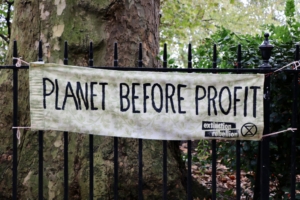Are You Ready for The Wave?
The Wave Is Here
As our CEO Jeff Berkowitz detailed in Campaigns & Elections today, while campaign operatives prepare to catch up on sleep after the election ends, corporate and issues advocacy professionals’ hard work is just beginning – charged with navigating their organizations through the new landscape shaped by the results. Following an election cycle driven by the twin tides of populism and progressivism, that task may prove even more difficult than in the past.
From aggressive congressional investigations to even more frequent executive action, companies will find themselves fighting a two front war in Washington. Those two fronts will extend across the country, as it is likely red states will get redder and blue state bluer after the election, sweeping into office newer, more ideological legislators from each party. Many of these legislators will find themselves in supermajorities and trifectas, both of which are expected to expand after the election. With one-party control growing in many states, these legislators — and an increasing array of down ballot statewide elected officials — will widen the already gaping policy chasm businesses have to straddle between red and blue states.
Fortunately, here at Delve we have a well-honed playbook that sets public affairs operations up for success in the face of such challenges. Here’s what you need to do to navigate what the post-election tides sweep into 2023 with an information advantage.
Subscribe to Receive Insights
"*" indicates required fields
Your Post-Election Playbook Is Here
Understand Where Your Risk Exists: More fights are about to occur in more jurisdictions on a wider range of issues on which companies and industries will be expected to engage. Yet even the most well-resourced organizations cannot run a 50-state offense and defense. To focus time and resources on where the most important battles are likely to occur, survey the landscape for where meaningful wins can be achieved and where serious political and reputational blows are likely to come. This survey should identify and assess key factors that indicate the likelihood of opportunity or challenges on key issues and interests for your organization, such as ballot initiatives; current and past activity of legislators and regulators; the presence and activity level of national and local activists, competitors, and other stakeholders; past and current lobbying efforts and political activities; and much more. At Delve, we weigh a customized set of risk factors across each jurisdiction to develop a heat map of risk and opportunity that helps public affairs professionals and lobbying teams target with pinpoint precision where to concentrate their resources and engage in the right fights early.
Find The Stakeholders: Friends are best found before the fighting begins, so once you understand where there is risk and opportunity, it is time to assess which stakeholders are likely to (or certainly ought to) engage in the debate, and whether you can work with them, or have to overcome their opposition. The traditional lobbying in “smoke-filled rooms” is long gone, so successful public affairs efforts must consider a range of actors beyond the actual policymakers, such as community organizations, competing businesses, labor unions, academics, and public and private interest groups. Reading the tea leaves of their previous statements and positions, funding sources, any relevant affiliations, and interests illuminates where they may come down in the fight, and together, help create a “web” of stakeholders that informs your strategy to bolster defenses and advance your interests through a winning coalition.
Secure An Information Advantage: Having assessed the landscape and mapped out the stakeholders, it is time to dig deeper into who those policymakers and stakeholders are and what is important to know about them. Whether it means developing key facts proving the value of a policy or discovering false motives of the opposition, an information advantage is an essential part of a winning public affairs playbook. These insights can include funding sources, inferred strategies and observed tactics, coordination with other groups, who influences them, what their motivations are, and how credible they should be considered by others. With more stakeholders engaging in more debates, the field of play is wider than ever before, so sharp, usable information lets you shape the debate with government decision-makers, the press, and public.
Build a System to Avoid Surprises: Even after charting a course and launching a campaign, the foundation it is built on continues to shift. The advocacy landscape moves faster and with greater intensity along with heightened political and reputational risks. By the time critical information reaches the headlines, it is often too late. Going past noisy mass media and social media to decipher what your opponents and key stakeholders are likely to do next is critical to mitigating risks and seizing on opportunities. Analyzing a wide range of primary and secondary sources can indicate changes to the state of play, so build a robust program that analyzes and synthesizes social media, press coverage, legislative action, regulatory filings, meeting schedules, event outcomes, stakeholder newsletters, and a wide range of other sources. It’s not the aggregation of these pieces of information, but rather the analysis of how they fit together that can provide a timely and actionable view of the landscape that keeps you ahead of the curve.
Don’t Wait to Turn Your Playbook into Action
Companies and industries cannot wait for the election results on November 8th to prepare for the coming onslaught of scrutiny and pressure. Next year’s legislative sessions and executive actions will be shaped and influenced sooner than you think. Smart public affairs professionals can leverage this playbook to keep their organizations ahead of the curve before it’s too late. If you need help assessing these risks and identifying which stakeholders are likely to shape next year’s policy debate, feel free to contact us.



